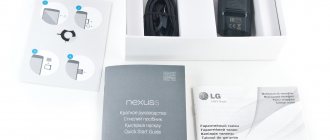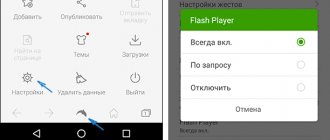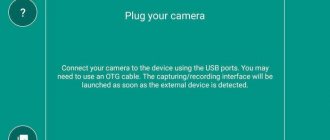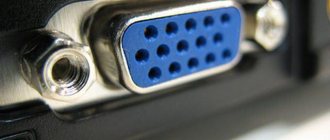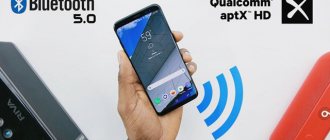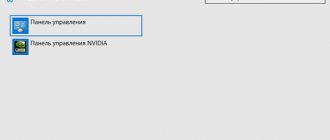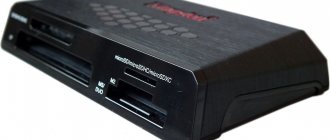Basic setup
Despite the fact that Android is the common OS for a million different smartphones, many manufacturers tweak and decorate the operating system in accordance with their vision of beauty. Therefore, the sequence of initial setup steps may differ slightly in different smartphones. There is no need to worry about this, just follow the instructions on the screen and you won’t miss. Now let's turn on and let's go. 1. If the device was purchased in a store, then after installing the SIM card and when you turn it on for the first time, you will be greeted by a welcome screen, where you will need to select the main interface language. Everything is simple here: in the list that appears, look for the one you need and click “Next”.
2. Following this, the system usually offers to connect to the desired Wi-Fi network so that the smartphone can communicate with the outside world and can quickly update the necessary updates. Everything is simple here - select your home network, enter a password and you're done. If something happens, you can skip this step and connect to the network later.
3. Full use of a smartphone is possible only if you have a Google account. If you already had an Android smartphone or previously created an account with Gmail or YouTube, simply enter your information and then agree to the terms of the license agreement.
4. If there is no account, then click “Create a new account” and go to the registration menu. Here you need to come up with an email address, a password and, if desired, enter your personal data. You should not skip this step, since without a Google account many services on your smartphone will not work.
Popular pure Android smartphones Nokia 5.3 64GB/4GB from 4,399 UAH. Motorola One Fusion Plus from 7,499 UAH. Google Pixel 3 64GB from 11,349 UAH. Google Pixel 4 XL 128GB from 19,449 UAH. Google Pixel 2 64GB from 6,026 UAH. Google Pixel 2 XL 64GB from 7,661 UAH. Google Pixel 3a from 10,199 UAH. Google Pixel 32GB from 4,720 UAH. Nokia 2.3 from 2,599 UAH. Google Pixel 4 XL 64GB from 18,089 UAH. Google Pixel 4 64GB from 17,939 UAH. Asus Zenfone Max Pro M1 64GB Z... from 3,999 UAH. Google Pixel 3a XL 64GB from 10,399 UAH. Motorola One Action from 5,799 UAH. Google Pixel XL 128GB from 5,759 UAH. Xiaomi Mi A2 64GB from 3,979 UAH. Google Pixel 128GB from 5,431 UAH. Google Pixel XL 32GB from 5,034 UAH. Meizu M10 32GB/3GB from 3,199 UAH. Nokia 2.2 from 2,299 UAH.
5. Next, most modern smartphones will offer you to transfer data from your previous handset to it or restore it from the cloud. The data transfer manager differs from smartphone to smartphone and is endowed with different functions from simply transferring previously installed applications to completely copying the system. Therefore, decide what exactly you want to return and what to leave in the past, and follow the instructions on the screen.
6. Almost there. Android will now prompt you to activate the necessary Google services. Usually, all items are checked, but you can uncheck unnecessary ones (for example, enhanced geolocation or sending anonymous system data to Google) and, if necessary, enable them later in the settings.
7. The last point is smartphone protection. In this menu, you will need to create a password/PIN code and add a fingerprint (if your smartphone has a fingerprint sensor). This will not take much time: you will need to touch the sensor in different places several times with the right finger and the impression will be ready. This will take a maximum of a minute, but in the future it will save a lot of time and nerves when unlocking the screen, contactless payments and authorization in banking applications.
Additional setup
After completing all the manipulations, Android will greet the new owner and offer a short introductory tour of the system. Essentially, the setup of the smartphone is complete, and now you can use it. However, we recommend devoting another 5 to 10 minutes of your time to in-depth customization of the system for yourself.
Updating the system
Even if you have a brand new smartphone, it's still worth doing. During the time that the smartphone was lying on the counter, the manufacturer could have time to roll out a whole pack of important and not so important system updates. As a rule, system updates are placed in a separate item in the smartphone settings (“About the system” or “System”), which is located at the very bottom of the list. Click on it and look for the “Software Update” item.
What to choose: phone or smartphone?
Mobile device technology is one of the fastest growing areas in consumer electronics, making terms like cell phone and smartphone difficult to define. However, most people use mobile phones primarily for phone calls, while smartphones are considered internet devices and are used less for voice calls.
Choosing between a standard cell phone or a smartphone comes down to whether calls or convenient Internet access and access to multimedia files are important to you.
Install the necessary applications
Most smartphones come with basic apps like Gmail, Skype or Facebook Messenger installed out of the box. However, such “starter packages” vary noticeably from manufacturer to manufacturer, and it often turns out that instead of the programs you need, the desktop is filled with some incomprehensible rubbish. Many people immediately after purchase pay extra to the store’s specialists for installing additional software, but this does not seem entirely reasonable to us. Since they install mostly free applications on their smartphones like Instagram, TikTok, FBReader, Pocket, VLC directly from Google Play.
Popular smartphones on Android 10 Q
Xiaomi Poco X3 from 9,559 UAH. Xiaomi Redmi Note 9 Pro 128GB from 6,700 UAH. Xiaomi Redmi Note 9 Pro 64GB from 6,039 UAH. Xiaomi Redmi 9 64GB from 3,877 UAH. Xiaomi Redmi Note 9 128GB/4GB from 4,777 UAH. Xiaomi Poco F2 Pro 128GB from 11,799 UAH. Xiaomi Redmi 9 32GB from 3,399 UAH. Samsung Galaxy S10 128GB from 15,799 UAH. Samsung Galaxy M31 128GB from 6,399 UAH. Samsung Galaxy S20 Plus from 19,595 UAH. Samsung Galaxy M21 64GB from 5,312 UAH. OnePlus 8 128GB from 15,049 UAH. Xiaomi Mi 10 Lite 128GB/6GB from 8,749 UAH. Xiaomi Redmi Note 9S 64GB from 5,449 UAH. Xiaomi Mi Note 10 Lite 128GB/6GB from 8,669 UAH. Samsung Galaxy S10 Plus 128GB from 16,749 UAH. Samsung Galaxy A51 128GB from 7,345 UAH. Xiaomi Redmi 9A from 2,749 UAH. Xiaomi Redmi Note 9S 128GB from 5,599 UAH. Xiaomi Redmi Note 9 64GB/3GB from 4,299 UAH.
Then why not do it yourself? We look for the Google Play icon in the menu or on the desktop, click on it and enter the name of the desired application in the search bar. Then we go to it, select “Install” and give it the necessary permissions to use the smartphone. And so we repeat the process for each application. Everyone has their own list of “needs,” so it’s difficult to give any recommendations. If you don’t know what you need, then be sure to look at thematic recommendations on Google Play itself or Google “the best apps for Android.” The main thing is not to rush to fill your smartphone to capacity, then you will forget what you installed and why, and the smartphone may slow down.
The evolution of smartphones. Part 1: 1994 - 2010
Back in 2013, I published an article Old advertisements for cell phones and smartphones (from the 1980s to the end of the 2000s), where you can watch the brightest phones from the 1980s. But this time I want to track specifically smartphones - communicators, smart phones, phablets, lampshades and other devices of the same type, the mere definition of the name of which caused battles among geeks. And so you need to start with IBM Simon, released more than 20 years ago. Then we will move on to Symbian devices, the appearance of the first iPhone and the first Android smartphone from HTC, remember devices from Nokia and end the journey with the latest gadgets introduced in 2020.
In the comments, please share your memories and provide links to your own reviews.
If the article is missing a specific model, please write about it in the comments with an image. This way we will make “Evolution” more complete.
IBM Simon
The IBM Simon had a large 4.7-inch monochrome display with a resolution of 160x293 pixels, and weighed half a kilo excluding the docking station.
This futuristic for that time mixture of a computer and a telephone without a keyboard, but with a touch screen, combined a mobile phone, a pager, an organizer, mail, and an alarm clock. The gadget ran on a 16-bit Vadem VG-230 16 MHz processor. By the way, there was a whole megabyte of RAM. Want to see what's inside? Read the analysis on Habré, and in the post on Geektimes read how you can upload pictures to this gadget. Film "Network", 1995.
Nokia 9000 Communicator
Was it possible not to dream about this device from Nokia in 1996?
It had a keyboard and two monochrome displays - an internal 4.5-inch 640x200 pixels, an external one 50x38. The gadget weighed 397 grams - you could fight off anyone. For the first time the device was called “Communicator”.
Ericsson R380
Let's move on to the first device, which was called a “smart phone” as part of the manufacturer’s advertising campaign.
This is the Ericsson R380, another gadget with a large 3.7-inch touch screen and the Symbian operating system. Before this, Ericsson made a lot of handheld computers without the ability to make calls and phones without the ability to use them as computers. “We call it a smartphone,” the ad says. The device was introduced to the world in December 1999, and began selling in 2000.
BlackBerry 5810
The history of Blackberry began in 1984, when University of Waterloo student Mike Lazaridis registered RIM - Research In Motion. The company began by designing devices for wireless data transmission, and in the 1990s borrowed text-transfer technologies over paging networks from Ericsson and RAM Mobile Data, after which it released a pager with a QWERTY keyboard that allows you to send messages. Further, most Blackberry devices looked exactly like this.
The first Blackberry smartphone appeared in 2002. The BlackBerry 5810 did not have a speaker or microphone; a headset was needed for conversations. But there was a keyboard.
Nokia 9210
Nokia 9210 continues the line of “communicators” from the Finnish company.
The gadget was released on Symbian OS 6.0 in 2002, but I still remember how much I wanted to get one. And I don’t know what I would do with it? Nokia 9210 boasted a 640x200 pixel color screen, 8 MB of RAM and 14 MB of internal memory. He didn’t work for long then - 10 hours. Review - here.
Nokia 7650
Nokia 7650, announced on June 26, 2002, was the first smartphone on Symbian OS - before that there were only communicators.
Here you can start arguing about what should be called what. The device was dubbed a “camera phone” in the media for its built-in camera, and it actually became the first device from Nokia with a camera.
Processor: 32-bit RISC 104 MHz. Memory - 4 megabytes, of which only 3.4 MB was available to the user.
Sony Ericsson P800
In 2002, Sony Ericsson introduced the P800 smartphone with a UIQ 2.0 interface based on Symbian OS v 7.0.
HTC Wallaby
Since April 2002, HTC has produced handheld personal computers running Windows Mobile.
The first was HTC Wallaby with an Intel StrongARM 206 MHz processor, 32 MB of RAM and the same amount of flash memory, support for MMC and SD cards, a 3.5-inch TFT display with a resolution of 240x320 pixels... Operating system - Microsoft Pocket PC 2002 Phone Edition. A year later, HTC Falcon appeared.
‘
And in 2004 - HTC Himalaya. This handheld no longer had a huge antenna.
Siemens SX1
In February 2003, the German company Siemens announced its entry into the smartphone market with the original Siemens SX1 on Symbian OS. The number keys are located on both sides of the case. When sales began in December 2003, the gadget cost $750, but in two years the price dropped to $250.
At the Hanover exhibition in 2005, Siemens demonstrated a new smartphone concept - with a laser keyboard.
Sony Ericsson P910
In 2004, Sony Ericsson P910 was released. The gadget received a QWERTY keyboard on the back of the flip. In this case, the flip can be removed from the gadget altogether to get a classic version of a smartphone with a minimum of buttons. The Symbian model is built on an ARM9 156 MHz processor, has 64 megabytes of RAM and supports Memory Stick PRO Duo up to 2 gigabytes.
HTC BlueAngel
HTC Blueangel went on sale in October 2004.
It was made under various brands, including Siemens. The display diagonal is 3.5 inches, memory is 96 MB built-in and 128 MB RAM. The device ran on Windows Mobile 2003SE. Processor - Intel PXA263 400 MHz. The gadget is made in a slider form factor with a full-size keyboard. Later there were Alpine, Gemini, Apache, Galaxy, Wizard, Prophet, Charmer, Hermes, Trinity and many other devices running Microsoft operating systems.
BlackBerry 7210
BlackBerry 7210 was the first Blackberry smartphone with a color display. The gadget had 2 megabytes of built-in memory and a 960 mAh battery.
HTC Magician
The Qtek S100 smartphone manufactured by HTC has been sold since 2005 under different names - 2 Xda II Mini (Asia), O2 Xda mini (Germany), T-Mobile MDA compact, i-mate JAM, Vodafone VPA Compact, Dopod 818, Krome Spy, and Orange SPV M500. This Windows Mobile 2003 device had 64 MB of built-in memory and the same amount of RAM, a slot for SDIO/MMC cards, a 1.3 megapixel camera, and a 2.8-inch screen with a resolution of 240x320 pixels.
Lenovo P930
Nokia, Psion, Ericsson and Motorola teamed up to develop Symbian OS in 1998.
Later, Sony Ericsson, Siemens, Panasonic, Fujitsu, Samsung, Sony, Sharp and Sanyo joined the consortium. The Symbian platform was the most popular smartphone platform in the world in the mid-2000s. Read about the rise and fall of Symbian here. The first Symbian gadget from Lenovo was the Lenovo P930 in 2005. The device supported GPRS, had a color display with stylus input and a 1-megapixel camera. Memory could be expanded using SD/MMC memory cards. The smartphone had a GPS navigator, an MP3 player, and it was possible to install JAVA applications on it.
Lenovo ET980
The Lenovo ET980 smartphone running Windows Mobile 5.0 received an Intel PXA270 312 MHz processor. The cover on the smartphone added regular buttons to it. The release of the gadget began in 2005.
Google buys Android
In July 2005, Google purchased Android Inc., in November 2007, it announced the creation of the Open Handset Alliance and announced the open Android mobile platform. In the same month, the alliance introduces the first version of the package for developers. In 2008, the first version of the operating system was released.
HTC P3600
In September 2006, HTC released the P3600 on Windows Mobile - a 150-gram communicator with a 2.8-inch TFT display and a resolution of 240x320, two cameras - a main 2 MP and a front one, 64 MB of RAM and 128 MB of internal memory. Samsung produced the processor for the smartphone.
Nokia N95
In March 2007, the Finns released the Nokia N95.
A Habr user called him the King of Smartphones, and in the first comment, another user expressed his “fi”: “there is no Qwerty keyboard, so I won’t even look in his direction.” Form factor: brick-slider. Display - 2.6-inch 240x320 pixels. Processor with a clock frequency of 330 MHz. Internal memory 160 MB. Camera - 5 megapixel with autofocus, electronic stabilizer and built-in flash. The gadget ran on Symbian OS v9.2.
iPhone
In May 2007, it became known that Apple iPhone sales would begin in June. Steve Jobs tried to get the most out of his subordinates so that the device was close to ideal. More than one book has been written about this.
HTC S740
The HTC S740 smartphone was released in 2008. It was built on a Qualcomm MSM7225 528 MHz processor, had 256 megabytes of RAM and built-in memory, and supported microSD. The screen diagonal is 2.4 inches and the resolution is 320x240 pixels.
BlackBerry Pearl 8120
In October 2007, BlackBerry released one of its first smartphones aimed not at the corporate segment, but at ordinary users.
The BlackBerry Pearl 8120 smartphone received a simplified keyboard - perhaps it could be called “semi-QWERTY”, a 2 megapixel camera and Wi-Fi support. The color LCD display had a resolution of 240x260 pixels. The internal memory of 64 megabytes could be increased using microSD.
BlackBerry Bold 9000
The BlackBerry Bold 9000 smartphone has a 2.6-inch display (non-touch) with a resolution of 460x320 pixels, a 2-megapixel camera and a 624 MHz processor. RAM is 128 megabytes, and the built-in memory is already a whole gigabyte. It was the first smartphone from RIM with GPS. The device was announced on May 12, 2008, and began selling on July 9, 2008.
iPhone 3G
On June 10, 2008, Apple introduced the iPhone 3G, an improved model in which the company tried to get rid of the shortcomings of the first version - for example, the device now connected to 3G networks.
HTC Dream
Sales of the HTC Dream, HTC's first Android device, began shipping in April 2009.
Photos of this “GooglePhone” and the “iPhone killer” first appeared online in September 2008. The smartphone received a qwerty keyboard, a 3-megapixel camera and a 3.5-inch touch display. A year after the release of the smartphone, Apple accused HTC of violating 20 patents and prepared more than 700 pages describing the claims:
We can sit back and watch our competitors steal our patented inventions, or we can do something about it. We decided to take action. We believe that competition in the market is healthy, but competitors should create their own unique technologies and not steal ours.
To this press release declaring war on HTC, the Taiwanese company gave a logical response:
We only became aware of Apple's intentions through a press release. The court document has not yet been served, so we cannot comment on the allegations at this time. We respect the value of patent rights, but we also want to protect our own innovations. We have been inventing and patenting our own technologies for over 13 years.
The list of devices that allegedly violated Apple's patents included Nexus One, Touch Pro, Touch Diamond, Touch Pro2, Tilt II, Pure, Imagio, Dream / G1, myTouch 3G, Hero, HD2 and Droid Eris. And this can be called recognition from Apple.
Samsung Galaxy
The Korean company Samsung announced the first smartphone in the Galaxy line on April 27, 2009, a few days after the start of sales of the HTC Dream.
A tiny 3.2-inch AMOLED screen, a 5-megapixel camera with autofocus and LED flash, a 3.5 mm headphone jack, a set of pre-installed applications from Google, 8 GB of internal memory, a 1500 mAh battery - this is what the Samsung Galaxy could boast of i7500. Read the review here. Russian commercial - filmed in one take.
HTC Magic
HTC's second Android phone, the HTC Magic, was released in April 2009 and demonstrated in February of the same year at Mobile World Congress. Read the smartphone review here. Notice the insert around the camera.
BlackBerry Storm 9500
In 2008, BlackBerry released its first smartphone with a touchscreen and no QWERTY keyboard. The gadget was presented in September and released in November 2008. The device received a 3.25-inch display with a resolution of 360x480 pixels. Processor - Qualcomm MSM7600 528 MHz. Again, the gadget had 128 megabytes of RAM. Built-in - 1 gigabyte, and there was support for microSD up to 16 GB.
Nokia 5800 XpressMusic
The Nokia 5800 smartphone was introduced in October 2008.
The device had a 3.2-inch screen with a resolution of 640x360 pixels. Freescale MXC300-30 ARM11 434 MHz processor, 128 megabytes of RAM. The gadget came with an 8 GB microSD. The main camera of 3.2 megapixels received Carl Zeiss optics, autofocus and LED flash.
iPhone 3GS
On June 8, 2009, at WWDC in San Francisco, Apple showed the iPhone 3GS with the updated iPhone OS 3.0. The 3.5-inch LCD display with a resolution of 320x480 pixels was developed by Apple and produced by LG. The processor is developed and produced by the Korean competitor Samsung S5PC100 ARM 833 MHz, but the hardware frequency is reduced to 600 MHz. Camera - 3 megapixels. RAM - 256 MB, built-in - 16 or 32 GB. The device received support for HSDPA communication.
HTC Hero
HTC Hero went on sale in July 2009, in Russia - in September.
This was the third HTC smartphone on the Android operating system. And the first Android smartphone to support Adobe Flash. The review is on Geektimes - read the link.
What about the technical characteristics - the Hero had 256 megabytes of flash memory and 288 megabytes of RAM. Processor - Qualcomm MSM7600A ARM11 528 MHz or MSM7200A ARM11 528 MHz.
HTC Evo 4G
The HTC Evo 4G smartphone became the first Android device to support WiMAX.
The device, powered by a 1 GHz Qualcomm QSD8650 processor, has 576 megabytes of RAM and 1 gigabyte of internal memory, a 4.3-inch screen with a resolution of 480x800 pixels and an 8-megapixel camera.
Motorola Droid
In October 2009, Motorola released the Droid smartphone, an Android slider with a QWERTY keyboard.
The device worked with Wi-Fi networks, had a 3.7-inch display with a resolution of 854x480, and supported microSD memory cards up to 16 gigabytes. Processor - Texas Instruments OMAP 3430. Built-in memory - 512 megabytes, RAM - 256 megabytes. This is the first smartphone to come with the free Google Maps Navigation app.
As of July 2010, the Motorola Droid was the most popular Android device. And second, third, fourth, fifth, eighth and ninth places in this ranking were occupied by devices from HTC.
HTC HD2
In November 2009, HTC released Leo (HD2).
This is a smartphone running the Windows Mobile operating system, with a 5-megapixel camera with autofocus, a 4.3-inch diagonal TFT display with a resolution of 480x800 pixels. Qualcomm Snapdragon QSD8250 1 GHz processor, 512 megabytes of internal memory and 488 megabytes of RAM. HTC Leo is the first smartphone with a capacitive screen running on Microsoft's operating system. It’s surprising that in a review of the smartphone on Geektimes, the following phrases popped up: “It fits like a glove in the hand, but people with small palms are unlikely to find the phone comfortable to use with one hand” and “However, it is more designed for men with large palms and fingers.” Let me remind you that the display is 4.3 inches. Now several girls I know are wearing Asus 5.5 inches and are very happy with its size.
Other reviews said, "The HD2 is truly huge." I look at my Lenovo Phab Plus and am surprised.
Nokia N900
In November 2009, Nokia released the Nokia N900 “Internet tablet”, announced on September 2 at Nokia World. The slider with a QWERTY keyboard on Maemo received 256 MB of RAM and 32 GB of flash memory, a slot for microSD up to 32 GB, a 5-megapixel camera, and a 3.5-inch screen with a resolution of 800x480 pixels.
Lenovo LePhone
On January 7, 2010, Lenovo introduced an Android smartphone - LePhone. The device has a 3.7-inch display with a resolution of 800x480, a 1 GHz Snapdragon processor, and 8 GB of internal memory. You can connect an external QWERTY keyboard, speakers and battery to the gadget. The device is initially aimed at the Chinese market.
HTC Legend
On March 1, 2010, HTC began selling the HTC Legend starting at $750.
The device boasted a 3.2-inch AMOLED display, the Android 2.2 operating system, a Qualcomm 7227 600 MHz processor, as many as 384 megabytes of RAM and 512 MB of internal memory. But the memory could be expanded via microSD up to 32 GB. Read the review, remember how it was. Although the Legend’s body was made of a single piece of aluminum, this did not affect the quality of signal reception, unlike the iPhone 4, whose signal level dropped significantly as soon as it was picked up.
The back panel is decorated with plastic inserts.
Samsung Galaxy S
Samsung Galaxy S was released in June 2010, and in just two months, 800 thousand devices were sold - an absolute record at that time for Android smartphones. The device received a 4-inch AMOLED screen with 480x800 pixels, an ARM Cortex A8 1 GHz processor, 512 MB of RAM and from 2 to 16 GB of internal memory with support for memory cards up to 32 GB. This is one of the first smartphones to support Bluetooth 3.0. The thickness of the device is 9.9 mm, it was one of the thinnest smartphones in its class. Cameras: 5 MP main and 0.3 MP front.
iPhone 4
On June 7, 2010, Apple released the new iPhone 4 with an industrial design. Read the review full of love and adoration here. The case is made of two pieces of polished reinforced glass and a stainless steel frame, which caused problems with signal reception - and these were predicted before the device went on sale.
Apple's official response:
If you hold any mobile phone in your hand, it will affect the performance of its antenna. Moreover, depending on the location of the antennas, in some places of the body this will be noticeably stronger. This is a fact of life for any cordless phone. If you've ever experienced this on your iPhone 4, avoid gripping the bottom left edge of it so that your hand touches both sides of the metal edge. Or simply use one of the many cases.
IDC Forecast
On September 7, 2010, IDC published a report forecasting growth in smartphone sales in 2010 by 55% compared to 2009. And says that by 2014 Android will occupy 24.6% of the smartphone market, Symbian - 32.9%, Blackberry - 17.3%, and iOS - 10.9%. Windows Mobile will have 9.6%.
If we look back briefly to 2014, we will see how much IDC analysts were wrong in 2010. Android took 84.8% of the market, iOS - 11.6%, Windows Phone - 2.5%. And Blackberry got only 0.5%.
Upgrade your home screen
Getting to the desktop after the first launch, the user sees only those utilities that the manufacturer decided to draw your attention to. Naturally, you can customize it for yourself and display only those applications that you really need on the main screen. In addition, you can add special widgets to Android (weather, clock, exchange rates, player, etc.) that allow you to interact with the application directly from the desktop. Applications are added to the desktop by simply dragging the icon to the desired location. To add a widget, you need to click on an empty area of the screen for a few seconds, then in the menu that appears, click on the “Widgets” section and select the one you need from the general list.
Changing the wallpaper
The desktop of a smartphone should please its owner. Especially at first. Wallpaper is an integral part of it and this is what the eye catches first. Instead of scouring the web and manually selecting them, install an app that will update your backgrounds automatically. For example, Wallz or WallHub. It is likely that you already have a similar wallpaper application on your system. Search for "Wall" or "Wallpaper" in the title.
Customizing the notification shade
The curtain for notifications and quick settings is the best invention of mankind since penicillin and the internal combustion engine. It allows you to quickly turn on/off geolocation, NFC, Wi-Fi, flashlight, auto-rotate screen, and basically anything in one click. Therefore, it would be logical to configure it immediately after the working screen. To do this, drag your finger from top to bottom across the screen until the curtain comes out. An icon resembling a pencil will appear in the upper right corner next to the gear icon. Click on it and go to the curtain settings menu: here you can change the order of the quick access icons, add the ones you need or, on the contrary, remove the unnecessary ones.
What does a smartphone consist of?
Many people don’t think about the fact that the small body of a smartphone hides a huge number of parts and components that provide certain functions. Main components of a smartphone:
- frame;
- CPU;
- motherboard;
- main and operational memory;
- battery;
- camera;
- sensors;
- wireless interface modules;
- display.
Frame
This is the first thing that catches the user's eye. It can have different sizes and shapes, but the main important parameter is the material used. It depends on ergonomics and ease of use. The main materials are glass, plastic, metal, ceramics. Most often, manufacturers combine these materials, and a rare device consists of only one metal or plastic.
CPU
Rightfully the heart of the smartphone. It is he who is responsible for all actions performed on the device. In general, a processor is not quite the right word, since it combines several nodes: a chipset (this is what is confused with a processor), a graphics coprocessor (analogous to a video card in a computer), as well as the peripherals that connect them . Modern chipsets are manufactured on ARM architecture using a specific technical process. At the moment, the most modern technological process is 10 nm. Important processor indicators are the number of cores and clock speed.
Important! The processor generates heat during operation. This means that this problem needs to be solved not by cooling, since the smartphone is too small, but by the processor itself - for this, different operating models are used, and also reduce the energy consumption of the chipset.
Motherboard
This is a kind of bone and circulatory system of the device. It is to it that all other nodes are connected, and also through it signals from one part are transmitted to another.
RAM and main memory
RAM is responsible for performance. It stores information necessary for the direct operation of the processor. It is often called temporary, since when the smartphone is turned off, the information is not saved in it. RAM has a relatively small capacity compared to the main memory, and currently reaches 8 gigabytes in smartphones.
The main drive is a kind of hard drive. All information is permanently stored here. Currently, the fastest memory for RAM is LPDDR 4X; the release of the 5th generation of this memory has been announced in 2020. Permanent drives have the fastest type USF 2.1. The maximum memory capacity of a modern smartphone reaches 512 GB.
Battery
She is responsible for battery life. The main types of batteries in smartphones are lithium-ion and lithium-polymer. The latter type is considered more modern and safer for work.
Camera
There is no point in talking about its purpose, since it is rare that a person does not use the camera in their smartphone. The development of modern cameras for mobile devices is proceeding at a tremendous pace. A dual camera no longer surprises anyone, and there are smartphones that work with three or four matrices. The main indicators are focal length, number of pixels, physical size of the matrix. Many additional features are being developed for phones that make shooting better - laser focus, optical stabilization, monochrome sensor, optical zoom and much more.
Sensors
These are small components that make using the device more enjoyable. There are light sensors, gyroscope, proximity, accelerometer, compass, finger scanner, face scanner, heart rate monitor and many others.
Modules
A modern smartphone must work with Wi-Fi, LTE networks, and GPS. Special modules that have antennas located directly under the device’s body are responsible for this.
On a note! One of the latest innovations that has not yet become widespread is NFC. The most widespread use is contactless payments.
Display
Any modern smartphone has touch controls. The screen is the face of the smartphone. Today, common screen types are IPS and AMOLED. They have their advantages and disadvantages. In addition to the type, screens differ in size, aspect ratio and resolution. These are all important parameters. In addition, screens can have different coatings - plastic film or glass. Expensive devices mostly use glass.
On a note! There are devices that have a “sandwich” type display structure, where there is glass, a metal base, a flexible layer, a touch layer and much more. Such front panels are not afraid of impacts.
How a smartphone works
The processor processes data that enters it from RAM and main memory. The main one is responsible for long-term storage of information. The operational one is a kind of base for the processor; first of all, it accesses it. Wireless interfaces operate using appropriate modules, and sensors are used for ease of operation. All this is installed on the motherboard. The device is powered by a battery. The camera is not a functionally necessary element, but it is important for users today. The entire structure fits into the case, and the front panel with the screen is a means for input and output of information.
Setting up display settings
Basic display settings often suit only a small number of users. Instead of being disappointed in the phone because of the “wrong” colors or large font, go to the smartphone settings and look for the “Screen/Display” section. First of all, we advise you to play with the color mode and temperature; these parameters can radically change the impression of your smartphone. Also in the settings you can set the desired brightness (or enable automatic brightness change) and font size. In the same section, you can configure the inclusion of a special night mode, which prevents exposure to blue light, which is especially negative when using the phone before bed.
Types of smartphones
Of course, when you hear the word smartphone, the device that everyone is familiar with immediately comes to mind – a body with a display and nothing extra, but in fact there are many types of smartphones. Some have completely disappeared, others are still represented by a narrow segment, and others are being reborn from oblivion. So, smartphones are of the following types.
- Business class is a flagship smartphone in which the manufacturer puts all the best it has. It is always a stylish case made of expensive materials, the best display, the most productive chipset, a large amount of memory, and an excellent camera. In other words, this is the best of the best.
- A camera phone is a device focused on photographic capabilities. The device may be weak in a number of ways, but the camera here always works great. Some manufacturers in this segment offered models with point-and-shoot style retractable lenses.
- Push-button. Don't think of a smartphone with buttons as a mobile phone. There are a large number of devices with support for a physical keyboard that offer completely similar capabilities to a touchscreen smartphone. An example of smartphones with a keyboard is the BlackBerry brand.
- With stylus. By and large, every touchscreen smartphone supports a stylus, but there are some devices that come with a stylus, and the software is tailored for its use. This is more relevant for work. Example - Samsung Galaxy Note.
- Cot. Once popular models, consisting of two parts, where the device opened up to reveal a keyboard on one part and a screen on the second. Today the segment is being revived, and a prime example of a top-end clamshell is the Samsung W2018. Some people prefer to call these devices a smartphone-book.
- A slider is a device with a retractable design, where the keyboard appears not by opening the device, but by sliding it out of the case. These models can be classified as push-button options or smartphone communicators. In 2020, models appear on the market that revive the trend, only in this case there will be cameras located on the retractable part.
- Gaming smartphones are a fresh trend and feature an original design, powerful hardware, the ability to connect special gaming accessories, and a liquid cooling system. The heating temperature in such models, according to manufacturers, will not exceed 12-14 degrees.
- Flexible smartphones are the technology of the future, which should soon appear in all its glory. In this case, the body and display will be able to bend in any shape and direction. Samsung is working on the technology.
- Frameless smartphones are a subtype of touch devices. The peculiarity is the absence of any frames around the screen.
- The iPhone is a device developed by Apple and runs its own operating system. Functionally and visually no different from touch devices.
- Phablet is a smartphone with a large diagonal, a transitional option from a smartphone to a tablet.
- “Indestructible” or protected devices are devices with enhanced protection of the case, display, protection from moisture and dust. They are often equipped with high-capacity batteries and are positioned as equipment for active people involved in hunting, fishing, and extreme sports.
Adjusting battery consumption
How often you charge your new smartphone will greatly affect how you use it. Therefore, we strongly recommend that you go to the settings menu, find the “Battery” item and do a little magic there.
Popular Android smartphones with good battery
Samsung Galaxy M21 64GB from 5,312 UAH. Huawei P30 Pro 128GB/6GB from 16,139 UAH. Huawei P30 Pro 256GB from 16,850 UAH. Huawei P30 128GB/6GB from 13,999 UAH. Blackview BV6800 Pro from 4,699 UAH. Asus Zenfone Max Pro M1 64GB Z... from 3,999 UAH. Xiaomi Redmi 7 64GB/4GB from 3,650 UAH. Nokia 3.2 16GB from 2,599 UAH. Blackview BV9500 Pro from 8,599 UAH. Lenovo K5 Pro from 3,649 UAH. Huawei P30 128GB/8GB from 13,485 UAH. Huawei Y6 2020 from 2,729 UAH. UMIDIGI S2 from 2,924 UAH. Huawei P30 Pro 128GB/8GB from 16,999 UAH. Asus Zenfone Max Pro M1 32GB Z... from 3,199 UAH. AGM A9 JBL from 6,390 UAH. Huawei P30 Pro New Edition from 19,399 UAH. Blackview BV9500 from 7,361 UAH. Samsung Galaxy M21 128GB from 6,922 UAH. CATerpillar S61 from 22,499 UAH.
In the parameters, the first thing you need to do is set the lower charge threshold, when reached, the energy saving mode will turn on. In some shells you can set this value with an accuracy of one percent, but most often it is a fixed value like 10%. You also need to decide whether to use the Battery Manager or Adaptive Battery features. The first will identify programs that consume excessive power and offer to limit their operation. In the second case, the system itself will monitor which applications you use least often and limit such background processes to extend the life of the smartphone on a single charge. The names and principles of operation of these features may differ slightly depending on the shell and version of Android, but the principles of their operation are general.
We additionally save energy consumption
In addition, battery consumption is greatly affected by screen brightness, conversations and the use of wireless networks and additional services. The general recommendations here are: turn off Wi-Fi, mobile Internet, Bluetooth, NFC and geolocation when you don’t need them. And in the screen settings, check the box next to “Auto”. Then the smartphone will adjust the brightness depending on the lighting around it, and not constantly shine at 100%.
We use mobile traffic wisely
Although mobile operators are handing out increasingly generous monthly packages with mobile traffic, it would be a good idea to monitor it. Step one - go to the system settings, look for the “Network and Internet” item, then “Data transfer”. There we will find the “Set traffic limit” menu, in which you can specify how many megabytes the smartphone can download before you are shown a notification. After reaching this limit, mobile Internet will be disabled.
It would also be a good idea to limit application updates via the mobile network. To do this, open Google Play and click on the icon with three vertical stripes in the upper left corner. An additional window will open in which you need to select the “Settings” menu. In it we look for the item “Auto-update applications” and select “Only via Wi-Fi”.
Summary
The prospect of setting up a smartphone yourself scares many buyers, but in reality there is nothing difficult about it. Android has come a long way from a clumsy “bucket” to an extremely convenient and well-thought-out operating system, so reading these instructions will most likely take you even more time than the setup itself. The main thing is don’t be afraid to “do something wrong” (it will be difficult) and don’t panic if you can’t find the right item in some menu. As we have already said, each smartphone manufacturer tweaks Android in accordance with its ideals of beauty, so some menu items may be called a little differently than in the text, or hidden in another section.
Using the Internet on Android
If you have already established an Internet connection, it's time to learn how to use the browser. If Wi-Fi is turned off, you can activate it in the mentioned notification menu or through the settings that you will find in the menu. After you open the wireless connection section, activate Wi-Fi, then the device will automatically search for networks. The only thing left to do is select a network from the list, enter a password if necessary and click “Connect”.
How to access the Internet on Android?
To do this, follow these instructions:
- Select the browser installed on your smartphone or tablet and open it.
- Then you can use the browser in the same way as on a computer - you will have a line for entering an address, the ability to add tabs, and additional icons hide menus for adding bookmarks, viewing page history, etc.
In general, there is nothing difficult about using the browser on a tablet or smartphone - if you don’t know some functions or icons, just try them.
We missed only one point - to enter the site address, you need a keyboard.
